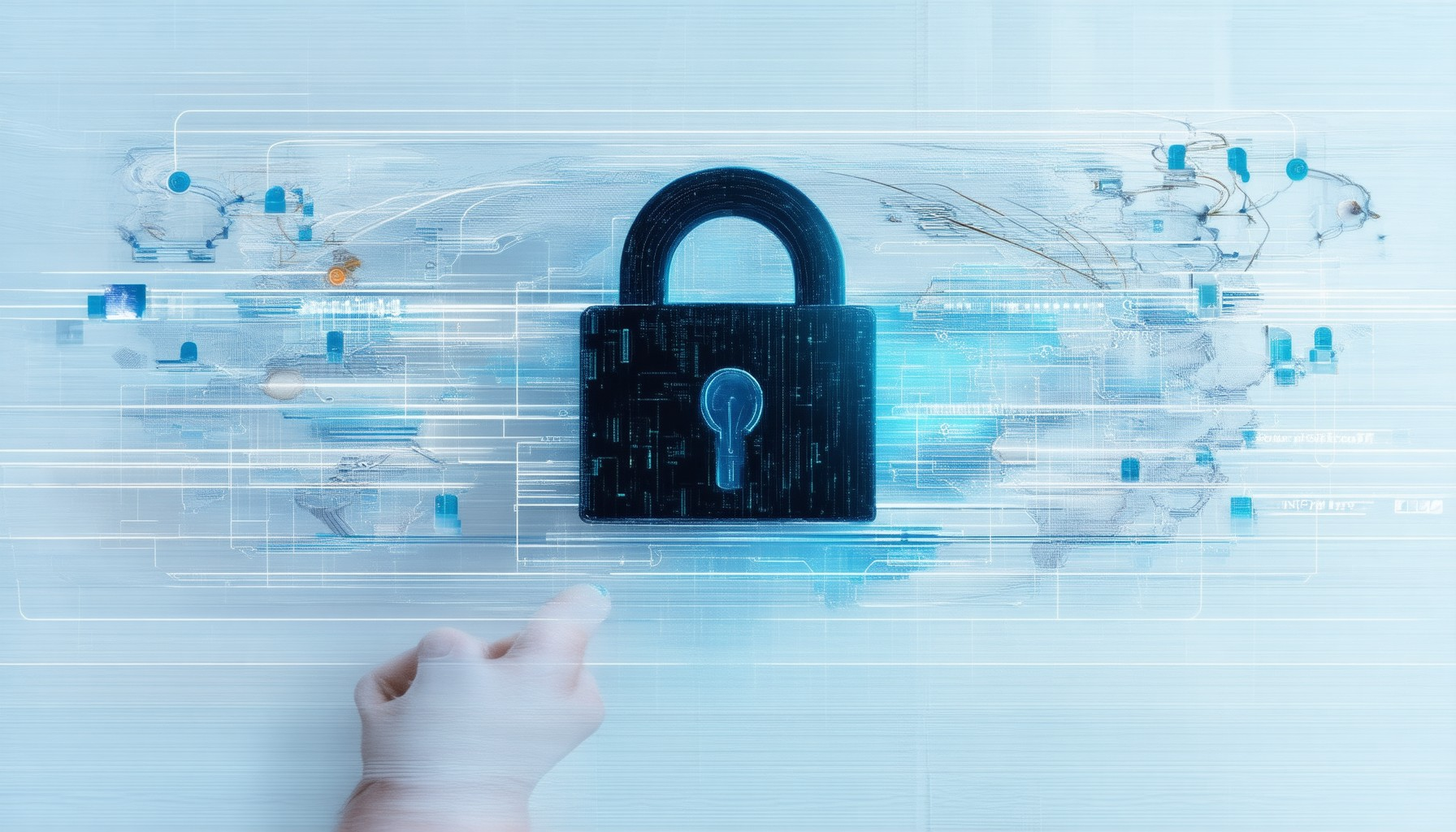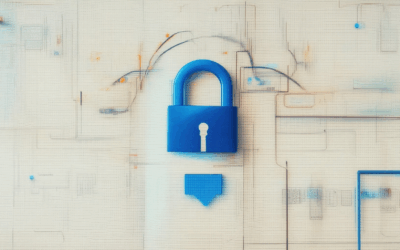In today’s interconnected world, enhancing internet security has become more crucial than ever. With cyber threats evolving rapidly, individuals and organizations must adopt robust measures to protect their digital assets. This guide delves into the critical components of strengthened internet security, offering actionable strategies and insights to safeguard your online presence. From understanding the fundamental principles of cybersecurity to implementing practical safeguards, we’ll explore how to fortify your internet security framework. Whether you’re a tech novice or a seasoned professional, this comprehensive overview will equip you with the knowledge needed to navigate the complexities of modern internet security.

The Five Cs of Security
The Five Cs of Security are essential principles that organizations must consider to ensure robust protection against threats. These principles guide decision-making processes and help in building a secure environment. Here are the five Cs:
- Compliance : Ensures that organizational practices meet legal and regulatory standards, protecting sensitive data and adhering to industry guidelines.
- Continuity : Focuses on maintaining business operations and IT infrastructure during and after disruptions, ensuring minimal downtime and data loss.
- Cost : Involves optimizing security investments to maximize protection without overspending, balancing risk management with budget constraints.
- Coverage : Ensures comprehensive security measures are in place, covering all aspects of the organization, including people, processes, and technology.
- Change : Manages transitions and implementations of new technologies or policies smoothly, minimizing risks associated with changes.
Each of these components plays a crucial role in safeguarding an organization’s assets and ensuring resilience against cyber threats. By prioritizing these Cs, businesses can build a stronger security posture.
How to Enhance Data Security
Data security is a critical aspect of protecting sensitive information from unauthorized access, breaches, and misuse. Here are some effective strategies to improve data security:
1. Encrypt Your Data
The safest way to secure your private data is to utilize encryption, which converts data into an unreadable format. This ensures that only authorized individuals can access it. Common encryption methods include:
- AES (Advanced Encryption Standard)
- RSA (Rivest-Shamir-Adleman)
- BitLocker (for Windows devices)
Always ensure that encryption keys and passwords are stored securely and backed up.
2. Implement Access Control
Limit who can access your data by using multi-factor authentication, role-based access, and strict permissions. This reduces the risk of unauthorized access. Tools like AWS IAM and Azure Active Directory can help manage access effectively.
3. Practice Data Minimization
Collect only the minimum amount of data necessary for a specific purpose. Excessive data increases the risk of breaches. For example, comply with regulations like GDPR, which mandates collecting only essential data.
4. Conduct Regular Security Audits
Periodically review your systems and data to identify vulnerabilities. Use tools like Nessus or OpenVAS to scan for security issues and fix them promptly. Regular audits help maintain strong security posture.
5. Educate Your Team
Security starts with informed employees. Provide regular training on cybersecurity best practices, phishing simulations, and data protection protocols. Resources like Cybrary can help enhance your team’s knowledge.
6. Monitor and Log Activity
Use monitoring tools to track unusual activity and detect potential breaches. Logs can help identify suspicious behavior and provide evidence for incident response. Enable logging for all access attempts and network traffic.
7. Protect Physical Assets
Secure physical devices, including laptops and hard drives, with locks and encryption. Destroy or overwrite data on discarded devices to prevent data recovery.
By combining these strategies, you can significantly enhance your organization’s data security. Remember to regularly update software, use strong passwords, and stay informed about emerging threats. For more resources, visit BlindBrowser.com .

Securing Your Internet Connection
To enhance the security of your internet connection, follow these organized steps:
- Password Management:
- Change your router’s default admin password and store it securely using a password manager.
- Enable two-factor authentication (2FA) for your email and social media accounts.
- Encryption Settings:
- Ensure your Wi-Fi uses WPA3 encryption if supported, otherwise WPA2.
- Check for firmware updates to enable the latest encryption standards.
- Public Wi-Fi Safety:
- Use a VPN whenever connecting to public Wi-Fi to encrypt your data.
- DNS Security:
- Enable DNS-over-HTTPS for encrypted DNS lookups.
- Regular Updates:
- Update your router’s firmware regularly to patch vulnerabilities.
- Check for updates on connected devices and apply them promptly.
- Network Segmentation:
- Divide your network into segments for different device types using VLANs or separate IP ranges.
- HTTPS Usage:
- Use browser extensions like HTTPS Everywhere to enforce secure connections.
- Physical Security Measures:
- Hide your router’s MAC address in settings to prevent unauthorized access.
- Securely place your router and use a cable lock to deter theft.
- Network Monitoring:
- Utilize tools like ntop or Wireshark to monitor traffic and detect anomalies.
- Set up alerts for unusual traffic patterns to stay informed.
- Provider Consideration:
- Compare internet providers based on security features and customer support.
- Switch providers if necessary to access better security offerings.

Best Practices for Enhancing Internet Device Security
Securing your internet-connected devices is crucial in today’s connected world. Here are some proven strategies to safeguard your devices and sensitive data:
- 1. Use Strong, Unique Passwords:** Never reuse passwords across multiple accounts. Create complex passwords with a mix of letters, numbers, and symbols to enhance protection.
- 2. Enable Two-Factor Authentication:** Add an extra layer of security by enabling 2FA for your accounts. This prevents unauthorized access even if someone knows your password.
- 3. Regularly Update Software:** Keep your operating systems and apps updated to patch vulnerabilities that could be exploited by hackers.
- 4. Use Encryption:** Encrypt sensitive data stored on your devices to ensure it remains unreadable by unauthorized parties.
- 5. Limit Device Access:** Restrict physical access to your devices and use screen locks to prevent unauthorized usage.
- 6. Segment Networks:** Isolate IoT devices and sensitive computers on a separate network to minimize exposure to potential threats.
- 7. Disable Unnecessary Features:** Turn off unnecessary services or features on your devices to reduce attack surfaces.
- 8. Monitor Activity:** Regularly check logs and activity monitors to detect and address suspicious behavior promptly.
- 9. Educate Yourself:** Stay informed about the latest cybersecurity threats and learn how to protect yourself online.
- 10. Consider Professional Help:** If you’re unsure about your security measures, consult with a cybersecurity professional to ensure comprehensive protection.
To further enhance your security, explore BlindBrowser’s comprehensive guides and tools designed to keep you safe online. Visit BlindBrowser.com for more resources and expert advice.
Improving Your Internet Security
Securing your internet presence is crucial in today’s digital world. Here are some practical steps to enhance your online safety:
- Password Management:
- Create complex passwords with at least 12 characters, combining letters, numbers, and symbols.
- Avoid reusing passwords across multiple accounts.
- Device Security:
- Enable screen locks with PIN or fingerprint for your smartphone and other devices.
- Regularly update device software to patch vulnerabilities.
- Network Safety:
- Avoid conducting sensitive transactions on public Wi-Fi; prefer encrypted networks or your own network.
- Look for HTTPS when browsing to ensure data encryption.
- Software Updates:
- Enable automatic updates for all software applications to stay protected against the latest threats.
- Email Caution:
- Do not open suspicious or unsolicited emails, especially those containing links or attachments.
- Learn to recognize phishing attempts by checking for misspellings or unexpected senders.
- Social Media Privacy:
- Review and adjust your privacy settings to limit sharing of personal information.
- Be cautious about location sharing and what information is publicly accessible.
- Data Backups:
- Regularly back up important files to an external drive or cloud storage solution.
- Two-Factor Authentication:
- Enable 2FA for your email, banking, and other critical accounts for an extra layer of protection.
- App Privacy:
- Research the privacy policies of apps you use to understand how your data is handled.
- Consider switching to apps with stronger privacy standards if needed.
- Scam Awareness:
- Stay informed about common scams and exercise caution with unknown callers or messages.
- Report suspicious activity to authorities if you suspect fraud.
- VPN Usage:
- Consider using a VPN to protect your online activity, especially on public networks.
- Stay Informed:
- Subscribe to newsletters or follow security blogs to keep abreast of the latest threats and solutions.

One Way to Improve the Security of a WIFI Network
Enabling the WPA3 protocol is one of the most effective ways to enhance your WiFi network’s security. WPA3 offers significant improvements over its predecessors, including WPA2, by using more robust encryption algorithms and providing additional safeguards against cyber threats.
Here’s a step-by-step guide to implementing this:
- Enable WPA3 or WPA2: Ensure your router supports WPA3 and that it is enabled. If your device doesn’t support WPA3, WPA2 is the next best option for strong security.
- Update Router Firmware: Regularly update your router’s firmware to patch any vulnerabilities. Check for updates from trusted sources like BlindBrowser .
- Change Default Password: Alter the default administrative password on your router from the manufacturer’s default settings to a strong, unique password. Use a combination of letters, numbers, and symbols for maximum security.
- Disable WPS: Turn off the Wi-Fi Protected Setup (WPS) feature on your router. While convenient, it can expose your network to potential attacks.
- Use a VPN for Public Networks: When connecting to public Wi-Fi, always use a VPN to encrypt your data and prevent unauthorized access.
- Check for Security Updates: Periodically review your router’s settings and install any available security patches to protect against known vulnerabilities.
- Use Strong Passwords: Create complex passwords for your router and any other network-related accounts. Consider adding two-factor authentication for added protection.
- Enable AES Encryption: Use the AES (Advanced Encryption Standard) algorithm for your WiFi encryption, as it provides stronger protection compared to older methods like WEP and TKIP.
- Monitor Network Traffic: Use tools like netstat to monitor your network and detect any suspicious activity.
By following these steps, you can significantly strengthen the security of your WiFi network and safeguard your data from potential threats.




